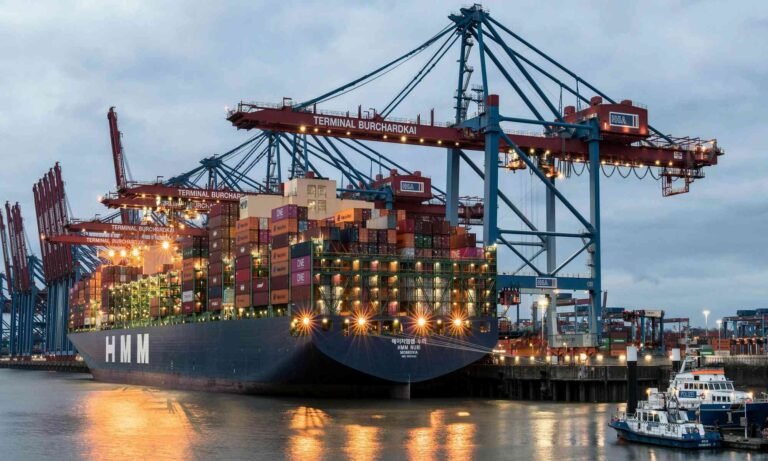Defining Economic Stability
Economic stability is a fundamental cornerstone that helps to maintain the functionality of an economy, ensuring that both individuals and businesses can operate effectively. This concept refers to a condition in which an economy experiences steady growth and low volatility in key economic metrics. Stability is characterized by minimal fluctuations in employment rates, inflation, and gross domestic product (GDP), enabling a predictable environment for both consumers and investors.
The significance of economic stability cannot be overstated, as it directly influences employment rates. When an economy is stable, businesses are more likely to invest, expand, and hire, contributing to reduced unemployment levels. Conversely, economic turbulence can lead to job losses and decreasing employment opportunities. Moreover, a stable economy typically experiences controlled inflation, where prices rise at a manageable rate, thereby safeguarding purchasing power and financial security for consumers.
To gauge economic stability, several metrics are frequently employed. GDP growth serves as a primary indicator, reflecting the overall economic performance of a nation. An increase in GDP usually signifies a healthy economy. Additionally, the unemployment rate is a crucial metric, indicating the percentage of the labor force that is jobless but actively seeking employment. A low unemployment rate is often a sign of economic stability, suggesting that jobs are readily available. Another important tool for assessing stability is the Consumer Price Index (CPI), which measures the average change over time in the prices paid by consumers for goods and services. By monitoring these indicators, policymakers and economists can formulate strategies and adjust fiscal policies to foster a stable economic environment.
Ultimately, understanding economic stability is essential, as it affects the daily lives of individuals, the operational strategies of businesses, and the decisions made by governments, thereby shaping the socio-economic landscape at large.
Payment Systems and Value Creation
The relationship between payment systems and value creation is a crucial aspect of economic stability. Efficient and reliable payment mechanisms not only facilitate transactions but also significantly reduce transaction costs. By streamlining the exchange of goods and services, these systems enhance overall economic efficiency and contribute to the creation of value across various sectors. For instance, businesses that adopt digital payment solutions can expedite the payment process, leading to quicker customer purchases and improved cash flow. This acceleration is vital for maintaining competitive advantage, particularly in rapidly evolving markets.
Modern payment solutions, such as mobile wallets and blockchain technologies, have transformed the traditional payment landscape. Companies like PayPal and Square have demonstrated how leveraging innovative payment systems can drive growth and scale operations effectively. Through these platforms, businesses can reach customers globally while reducing the overhead associated with brick-and-mortar transactions. As a result, they are not only able to innovate their product offerings but also create new revenue streams that were previously unattainable.
Moreover, policymakers play an essential role in fostering economic stability by enhancing payment infrastructures. Improving the regulatory frameworks surrounding payment systems can encourage innovation and protect both consumers and businesses. Investment in secure, efficient payment technologies is paramount; it allows for a seamless integration of value creation processes. Governments should thus prioritize initiatives that promote financial inclusion and expand access to stable payment solutions, enabling small and medium enterprises (SMEs) to harness the benefits of modern payment systems.
In conclusion, the interplay between means of payment and value creation underscores the importance of innovative payment systems in achieving economic stability. As businesses and policymakers work together to optimize these systems, the potential for enhanced economic growth and value generation remains substantial.
Means of Payment: The Backbone of Economic Transactions
Economic transactions are fundamentally facilitated by various means of payment, which serve as the critical mechanisms for transferring value from one entity to another. The primary forms of payment include cash, credit, digital currencies, and mobile payment systems. Each of these methods plays a unique role in the dynamics of economic stability, influencing both consumer behavior and business operations.
Cash has traditionally been viewed as the most straightforward Means Of Payment, providing immediate liquidity and a tangible form of transaction.
However, the growth and accessibility of credit have transformed this landscape, allowing consumers to engage in transactions without immediate funds. Credit systems enable an increase in purchasing power, thereby stimulating consumption and impacting overall economic activity.
The technological evolution in payment systems has paved the way for digital currencies and mobile payment options, which are rapidly gaining popularity. Digital currencies, like cryptocurrencies, offer decentralized alternatives to traditional currencies, fostering new forms of transactions. These emerging payment methods not only enhance the speed and efficiency of transactions but also influence consumer behavior by enabling easier access to financial services.
Mobile payment systems represent another significant advancement, making payments more convenient through smartphones. These systems allow consumers to conduct transactions with a simple tap or scan, reflecting a shift toward cashless economies. The adoption of these mobile technologies contributes to the overall efficiency of economic activities, as they streamline payment processes for both consumers and businesses.
Financial institutions and regulatory bodies play an essential role in maintaining secure payment systems. Their oversight ensures that transactions are conducted safely, protecting consumers and businesses from fraud and enhancing confidence in means of payment. As these payment methods continue to evolve, their implications for economic stability will be increasingly significant, shaping the future of commerce and financial interactions globally.
Value Creation: The Engine of Economic Growth
Value Creation stands as a pivotal concept within the framework of economic stability, functioning as the driving force behind sustainable economic growth. Businesses achieve value creation through a variety of mechanisms, which include the innovation of products and services, enhancing productivity, and delivering high-quality offerings to consumers. By prioritizing these elements, organizations can not only satisfy customer needs but also foster a sustainable competitive advantage in their respective markets.
One of the primary models of value creation hinges on continuous innovation. By introducing innovative solutions, companies can differentiate themselves from competitors and address the changing demands of consumers. This, in turn, leads to increased market share and enhanced profitability. Another significant aspect is productivity improvement. Efficient use of resources ensures that businesses generate greater output at lower costs, ultimately translating into better financial results and, consequently, greater sustainable value creation.
Additionally, the quality of products and services plays a critical role. Satisfied customers are more likely to become repeat buyers and refer others, creating a positive feedback loop that benefits both the business and the economic landscape. Supply chains also significantly influence value creation. A streamlined supply chain reduces costs while increasing efficiency, thereby enhancing overall business performance.
Furthermore, the relationship between value creation and sustainable economic practices cannot be overlooked. Aligning profitability with social responsibility demonstrates a commitment to ethical business practices, which can positively impact brand reputation and consumer loyalty. When businesses integrate sustainability into their value creation strategies, they not only contribute to their bottom line but also support long-term economic stability. This alignment of interests between profitability and societal welfare illustrates the profound connection between value creation and enduring economic growth.
Threats to Economic Stability
Economic stability faces several key threats, including inflation, which weakens purchasing power, and trade policy uncertainty, which disrupts global markets. Climate-related disasters pose risks to infrastructure and businesses, while high sovereign debt strains government finances. Geopolitical conflicts can lead to market volatility and resource shortages, while monetary policy shifts affect borrowing costs and investments. These factors, along with technological disruptions and labor market changes, contribute to an unpredictable economic landscape that demands careful management and adaptive strategies. Even minor disruptions can ripple across economies, emphasizing the need for global cooperation.
What’s More
The posts in My Blog feature reflective, story-driven pieces rooted in personal and societal insights.
The topics in My Interests explore abstract, philosophical ideas and their cultural and societal impact.
👁️ 5,879 Views


















